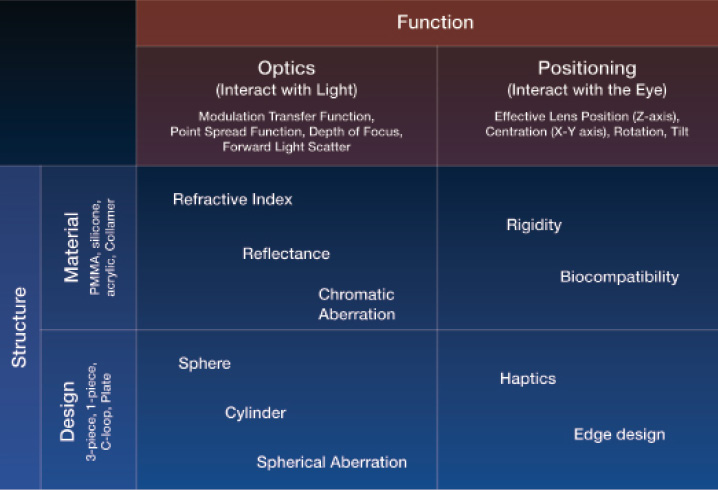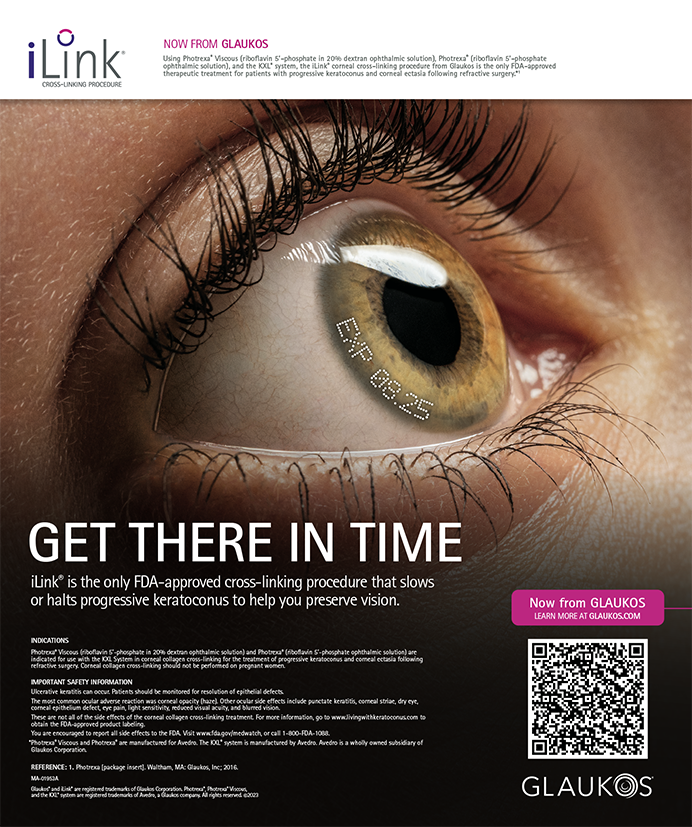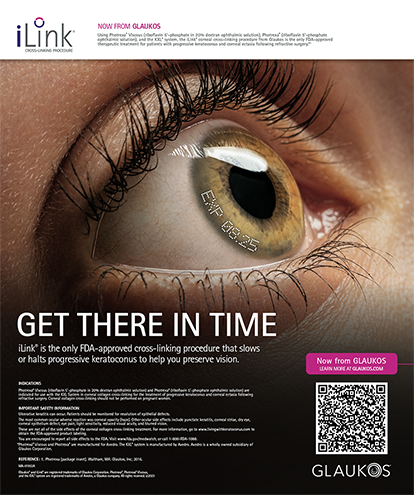
Why do we care how or of what an IOL is made? What properties make an IOL perform in a certain way? How does this affect my patient? These can be important considerations in IOL selection that Daniel Chang, MD, breaks down in this installment of “Residents and Fellows.”
—Sumit “Sam” Garg, MD

Structure and function are important, intertwining concepts in medicine. In glaucoma, for example, optic nerve head imaging (structure) and perimetry (function) play complementary roles in monitoring disease progression. In oculoplastics surgery, restoring the eyelid’s appearance (structure) and proper movement (function) are both necessary. In refractive surgery, creating the proper optical profile (structure) leads to great UCVA (function).
This structure-function concept can provide a useful framework for evaluating the merits of the ever-expanding IOL options available to us ophthalmologists. This approach can be especially important as new types of premium IOLs enter the market. All implants represent a range of optical and design tradeoffs; instead of focusing on lists and sets of features, a structure-function matrix may facilitate our assessment of how these tradeoffs can affect our patients.
STRUCTURE
The structure of an IOL is defined by two characteristics: material and design. This is how we traditionally categorize IOLs. The material can be polymethylmethacrylate, silicone, acrylic, or collamer. The design may be a one-piece or three-piece IOL. It could have refractive or diffractive optics; it may feature plate, C-loop, or another type of haptic; and there may be edge design or other noteworthy characteristics.
FUNCTION
The function of an IOL is twofold: to interact with light (optics) and to interact with the eye (positioning). The optic is responsible for focusing light, and the haptic is responsible for holding the optic in the eye. We often describe optical function with terms like modulation transfer function, point-spread function, depth of focus, and forward light scatter. IOL positioning is described using terms such as effective lens position (Z-axis), centration (X-Y axis), rotation, and tilt.
STRUCTURE PLUS FUNCTION
The power of the structure-function concept comes in looking at the interaction between the two. How do material and design characteristics (structure) affect the optics and positioning (function) of an IOL? The interconnectedness of these properties reminds us of the ingenuity of today’s IOLs, but it also challenges us to create even more advanced lenses for the future.

Figure. A matrix for evaluating IOL performance by structure and function.
The properties of an IOL’s material significantly affect how the lens interacts with light—its optics. All materials, for example, have their own index of refraction that affects how fast light passes through the material. Snell’s law dictates that higher-index materials require less convexity and can therefore be used to create thin lenses; however, such materials necessarily have higher surface reflectance that can produce bright external or internal reflections. Dispersion of visible light into its component wavelengths (or colors) is also related to the refractive index. Lower-index materials generally have higher Abbe numbers and low dispersions, which minimizes chromatic aberration.
Among foldable IOL materials, only the STAAR silicone (STAAR Surgical) and Tecnis acrylic (Abbott Medical Optics [AMO]) materials have published Abbe numbers greater than the human lens.1,2 Interestingly, chromatic aberration can be affected by lens design as well. Surface diffractive patterns, such as that found on the Tecnis Multifocal IOL (AMO), can actually reduce chromatic aberration,3 similarly to the diffractive optics used in some high-performance camera lenses.
Other aspects of an IOL’s design logically affect other characteristics of the optic. The curvature profile of an IOL’s refractive surfaces determines how the lens bends light to correct sphere, cylinder, and spherical aberration.
Both material and design features influence how a lens interacts with the eye and how it is ultimately positioned in the eye. For example, material characteristics include the rigidity of the lens material and biocompatibility. Design features such as the haptic design and mechanism for fixation inside the eye are critical for proper positioning and continued stability over time. How the edge of the lens interacts with lens epithelial cells can be an important factor in the development of posterior capsular opacification.
THE BIG PICTURE
Thinking of lens performance as a matrix of structural and functional characteristics allows us to better prioritize features. There will always be tradeoffs to make and characteristics to balance when creating IOLs. Ideally, I want an IOL to deliver outstanding optics, to allow precise positioning, and to demonstrate sustained stability, and I would prioritize those goals in exactly that order. After all, if an IOL has poor optics, proper positioning cannot improve the way it bends light. Similarly, if a lens is poorly positioned, is its perfect stability over time helpful? To my mind, outstanding optics are a fundamental starting requirement, to which we can then add the functional benefits of precise and stable positioning.
1. Zhao H, Mainster MA. The effect of chromatic dispersion on pseudophakic optical performance. Br J Ophthalmol. 2007;91:1225-1229.
2. Negishi K, Ohnuma K, Hirayama N, et al. Effect of chromatic aberration on contrast sensitivity in pseudophakic eyes. Arch Ophthalmol. 2001;119(8):1154-1158.
3. Weeber HA, Piers PA. Theoretical performance of intraocular lenses correcting both spherical and chromatic aberration. J Refract Surg. 2012;28(1):48-52.
Section Editor Sumit “Sam“ Garg, MD
• medical director, vice chair of clinical ophthalmology, and an assistant professor of ophthalmology at the Gavin Herbert Eye Institute at the University of California, Irvine, School of Medicine
• serves on the ASCRS Young Physicians and Residents Clinical Committee and is involved in residents’ and fellows’ education
• gargs@uci.edu
Daniel H. Chang, MD
• private practice at Empire Eye and Laser Center in Bakersfield, California
• (661) 325-3937; dchang@empireeyeandlaser.com
• financial disclosure: consultant to AMO




